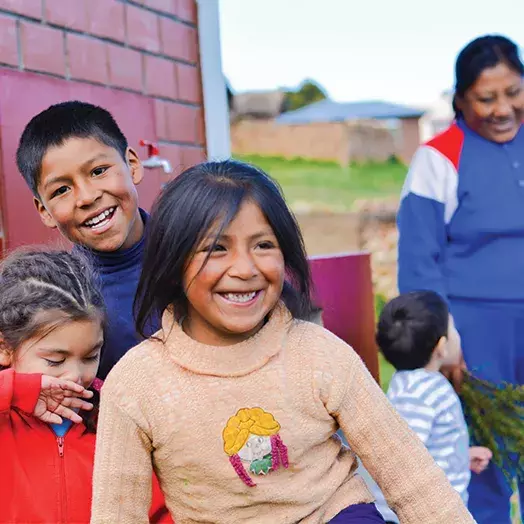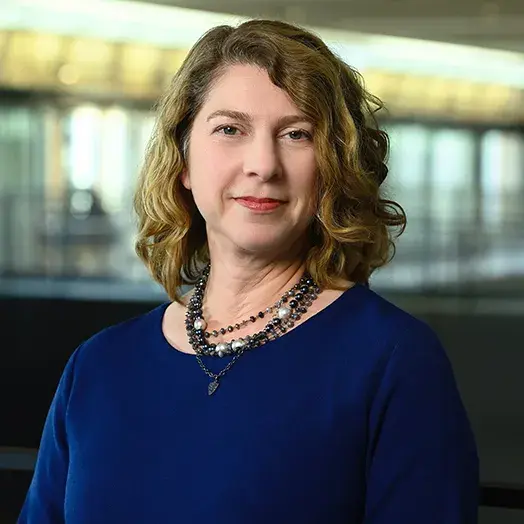Emilia Simeonova’s research finds income generated from casino operations can reduce the probability of mortality for Native American communities.

Tribal casinos: A winning bet for reducing Native American mortality
Native Americans have long experienced dramatic disparities in health outcomes and mortality compared to other ethnic groups in the United States. One recent study, for example, found that Native American women, on average, die 13 years earlier than white women; Native American men, on average, die 12 years earlier than white men.
Could income generated by casinos on tribal land help move the dial on those dismal figures? That’s the question addressed recently by Johns Hopkins Carey Business School Professor Emilia Simeonova, whose research over the past decade has examined a range of racial disparities in health outcomes and the economics of health care delivery.
After analyzing Medicare records for 20 years (1999–2018), Simeonova and colleague Randall Akee, of UCLA, found that casino operations reduced the probability of mortality for Native American men in the study by 7.4% compared to men of other races who also lived in the area. The benefits were even greater for Native American women, whose probability of death was reduced by about 9% compared to women of other races.
“Our findings show that opening a casino on tribal lands and disbursing unearned income to tribal members has positive effects on the longevity of Native Americans in Medicare residing there,” the researchers conclude.
Sharing the wealth
After the Indian Gaming Regulatory Act was passed in 1988, many Native American tribes filed for gaming permits in the ensuing decade. Gaming revenue in American Indian communities subsequently soared, as the researchers note in their paper, “Economic Development, Unearned Income, and Mortality: Evidence from Tribal Casinos,” published by the National Bureau of Economic Research.
“There are two ways that the profits from casino gaming can be handled,” Simeonova explains. “The first way is for tribal leadership to invest in community resources, such as improving the roads and building a community center, or a school. The second way, used in about two-thirds of cases, is for tribes to take a portion of the profits, or all of the profits, and divide them evenly among tribal members as ‘unearned cash.’ Members get a check in the mail, either annually or biannually. These disbursements can range from less than $1,000 per person to hundreds of thousands of dollars.”
In their analysis, Simeonova and Akee compare mortality for individuals living on reservations that opened casinos and distributed unearned income with individuals living on lands that did not open a casino. And they tapped into a wealth of Medicare data, beginning in 1999 — the year that the Centers for Medicaid and Medicare Services started receiving health data from the Indian Health Service and updating race categories accordingly. The team’s sample included all individuals identified as Native American and a randomly selected 20% of individuals from other racial backgrounds.
Notably, the researchers found that the longevity gains from the economic activity of casino disbursements also spilled over to the broader community. “The cash transfer is only provided to tribally enrolled American Indian citizens of that tribe but the improvement in mortality accrues to all people,” they write.
As to what might account for the difference in longevity impact between Native American men and women (9% vs. 7.4%), Simeonova posits that the men are in a stronger financial situation at the retirement age of 65 (when Medicare typically begins). Having participated in the formal workforce at a higher rate than their female counterparts, more Native American men would receive monthly Social Security benefits.
“For women living in poverty, who may never have worked outside the home, getting a casino disbursement of $2,000 each month would have a bigger impact,” Simeonova says.
What to Read Next

business of health
Researchers call for a new federal agency to reduce health inequities among Indigenous communitiesLessons for longevity
The study by Simeonova and Akee is the first to examine the effects of tribal casino operations on health and mortality using longitudinal data.
Simeonova acknowledges that there are limitations to their findings. There are a notable number of Native Americans who can’t — or choose not to — join the Medicare rolls, either because they aren’t eligible or because they opt out of being involved with the federal government. In addition, the study is conditional on participants reaching age 65. “The average age of death for Native Americans is 64, so there is a bit of survivor ‘bias’ in our study population. Only the tougher individuals make it [to the sample],” she says.
That said, “while the population may not be representative of all Native Americans, it is representative of Native Americans on Medicare, starting in 1999,” says Simeonova.
The takeaways from the study’s findings, she says, lend credence to the simple truth “that if you give people living in poverty more money, they can live longer.”
For policymakers, she says, this presents an opportunity. “By enabling underprivileged communities to thrive economically,” she says, “we not only affect their economic status but also reduce health and longevity inequalities in a way that is very striking.”


